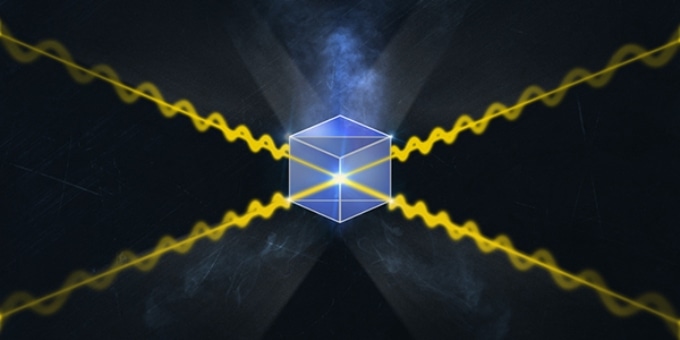Sep 22 2017
On 21st September 2017, Nature Communications published research demonstrating entanglement swapping and teleportation of orbital angular momentum “patterns” of light. This research was carried out by Scottish and South African Researchers and is considered to be a vital step towards realizing a quantum repeater for high-dimensional entangled states.
 Credit: Wits University
Credit: Wits University
Quantum communication over long distances is considered to be essential for information security and has been demonstrated in free space and fiber with two-dimensional states, recently over distances beyond 1200 km between satellites. But using just two states decreases the information capacity of the photons, hence the link is secure but indeed slow.
To make it fast and secure requires a higher-dimensional alphabet, for instance, using patterns of light, of which there are an infinite number. The orbital angular momentum (OAM) of light is one such pattern set. Increased bit rates can be attained by using OAM as the carrier of information.
Such photon states however decay when transmitted over long distances, for instance, due to turbulence in free space or mode coupling in fiber, thus necessitating a way that will help intensify the signal. Such “amplification” is unfortunately not allowed in the quantum world, but it is possible to produce an analogy, known as a quantum repeater, similar to optical fiber repeaters in classical optical networks.
An essential part of a quantum repeater refers to the potential to entangle two photons that have never interacted – a process known as “entanglement swapping”. This is attained by interfering two photons from separate entangled pairs, resulting in the remaining two photons becoming entangled. This allows the formation of entanglement between two distant points without the need for one photon to travel the whole distance, thus decreasing the effects of loss and decay. It also highlights the fact that a line of sight between the two places is not essential.
This results in the possibility of transferring the information of one photon to the other, a process known as teleportation. Similar to the science fiction series, Star Trek, where people are “beamed” from one place to another, information is “teleported” from one place to another place. If two photons are entangled and a value on one of them is changed, then the other photon automatically changes too. This occurs despite the fact that the two photons are never connected and, actually, are in two completely diverse places.
The team carried out the first experimental demonstration of entanglement swapping and teleportation for orbital angular momentum (OAM) states of light in this recent work. They demonstrated that quantum correlations could be established between photons that were previously independent, and that this could be employed for sending information across a virtual link. Most importantly, the scheme is scalable to greater dimensions, making the way for long-distance quantum communication with increased information capacity.
Background
Existing communication systems are extremely fast, but not basically secure. In order to make them secure, Researchers use the laws of Nature for the encoding by exploiting the strange properties of the quantum world. Entanglement is one such property. When two particles are entangled they get connected in a spooky sense: a measurement on one instantly changes the state of the other no matter how far apart they are. Entanglement is one of the core resources required to realize a quantum network.
A secure quantum communication link over long distance is still considered to be extremely challenging: Quantum links employing patterns of light languish at short distances precisely as there is no way for protecting the link against noise without identifying the photons, however their usefulness is destroyed once they are detected.
To overcome this, it is possible for one to have a repeating station at intermediate distances – this allows one to share information across a much longer distance without the requirement for the information to physically pass over that link. The core ingredient is to obtain separate photons to become entangled. This has been earlier demonstrated with two-dimensional states, and yet in this work the team revealed the first demonstration with OAM and in high-dimensional spaces.
Paper Abstract
High-bit rate long distance quantum communication is a proposed technology for future communication networks and depends on high-dimensional quantum entanglement as a central resource. While it has been established that spatial modes of light provide an avenue for high-dimensional entanglement, the potential to transport such quantum states robustly over long distances continue to be challenging.
In order to overcome this, entanglement swapping may be employed to produce remote quantum correlations between particles that have not interacted, the essential ingredient of a quantum repeater, similar to repeaters in optical fiber networks. This paper demonstrates entanglement swapping of multiple orbital angular momentum states of light. The approach used here does not distinguish between varied anti-symmetric states, and thus entanglement swapping takes place for several thousand pairs of spatial light modes in a simultaneous manner. This work represents the initial step towards a quantum network for high-dimensional entangled states and further provides a test bed for fundamental tests of quantum science.